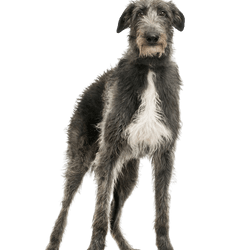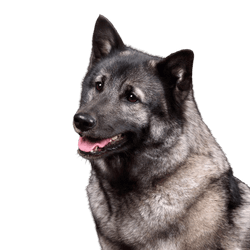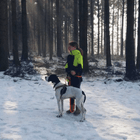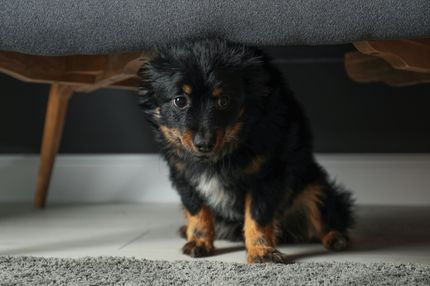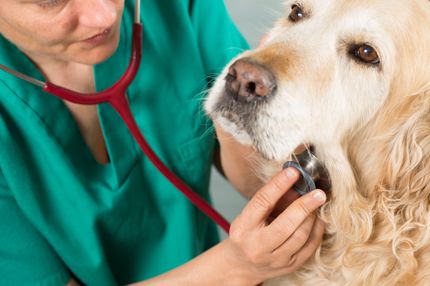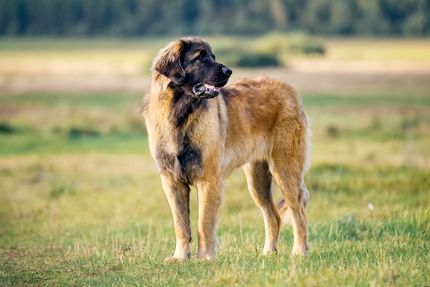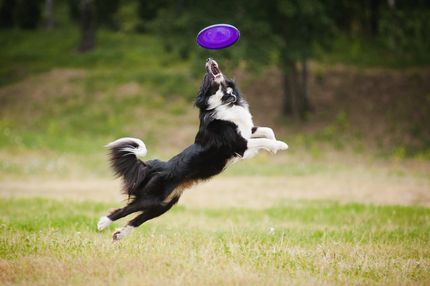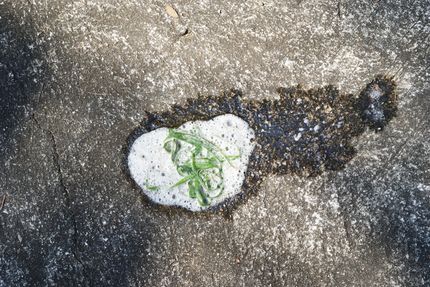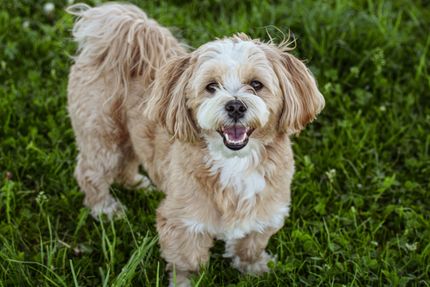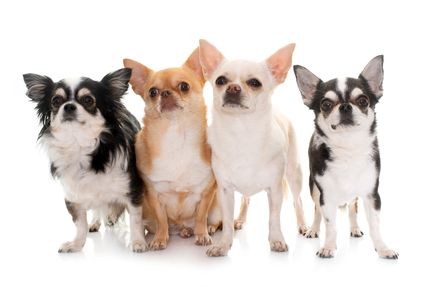Facts & Origin
Origin and history of the Scottish Deer Ekhound
The origin of the Scottish Deer Elkhound can be traced back to a special mix: The Deerhound and the Norwegian Elkhound gray are the two origins of this extraordinary dog.
Biology shows that the Deerhound was used to hunt deer in the Scottish Highlands as early as the Middle Ages. The Elkhound, which originated in Norway, was originally intended for hunting moose. By combining these two breeds, the Scottish Deer Elkound was created.
Suitability and attitude
With an inherited hunting instinct, it is an active dog that requires plenty of exercise and exercise. Consequently, he is ideal for active families and dog owners who enjoy being outdoors. Due to his intelligence and ability to learn, he is very easy to train. With enough exercise, this dog shows itself to be a calm and balanced companion.
| Alternate Name | - |
| Origin | Scotland - Norway |
| Life expectancy | 9 - 15 years |
| Care requirements | high-maintenance |
| Activity level | average to high - high |
| FCI group | not recognised |
| AKC group | not recognised |
| KC group | not recognised |
More Scottish deerhound mixes
More Norwegian Elkhound grey mixes
Attitude, character and temperament of the breed
Temperament
The temperament of the Scottish Deer Elkound is characterized by the calm and even-tempered nature of the Deerhound and the alertness and activity of the Norwegian Elkhound. They are affectionate and friendly towards their owners, but can be reserved towards strangers.
This breed is known for its friendliness, intelligence and loyalty. They are sociable and love to spend time with their family. Although they get along well with children and other dogs, they need good socialization and loving, consistent training to bring out their best personality.
Training and agility
They excel in intelligence and quick perception, which makes training easier. Their inclined passion for hunting requires careful socialization and leash training. They have a high ability to move and need a lot of exercise, so they are less suitable for apartment living.
However, their strong hunting instincts and energy require consistent training and plenty of exercise.
Usage
Health and care
The coat is thick and rough and requires regular grooming. This may mean weekly brushing to keep the skin healthy. During the shedding seasons of spring and fall, it is recommended to extend this grooming to daily. Bathing should only be done when necessary, as too frequent bathing can strip the coat of its natural oils.
In addition to coat care, it is important to perform regular dental cleanings, nail care and ear checks. Nutrition should include a balanced meal that meets their energy needs.
Proper health care is essential to keep him healthy and happy. Common health problems include hip dysplasia, heart disease and certain eye conditions. Regular vet visits, a healthy diet and adequate exercise are key to preventing health problems.
Breeding the Scottish Deer Elkhound
Special care must be taken when breeding. It requires understanding the genetic characteristics and health risks of both parent breeds. It is recommended to select breeders who pay attention to the health and behavior of the breeding stock.
With good care and regular veterinary examinations, it has an average life expectancy of 10-13 years.
What does this mixed breed look like?
This mixed breed is a large dog, with a long, strong body and a well-muscled structure. The head is in many cases long and narrow with a pointed muzzle. His eyes are usually dark and expressive.
Its coat is thick and dense, typically gray, although variations may exist. It is also often described as dense and wiry, with a soft undercoat that protects him against both cold and wet conditions.
| Fur length | medium - long |
| Fur | rough-haired - |
| Ear shape | Triangle - Standing Ears |
| Tail | lang - rolled up |
| Anatomy | slim, massive, sporty |
| Size ♀ | 43 - 78 cm |
| Weight ♀ | 19 - 36 kg |
| Size ♂ | 46 - 85 cm |
| Weight ♂ | 20 - 46 kg |
| Suitable For | - |
Known Diseases
Bone Cancer
May occur with age.
Heart disease
Can occur frequently in dogs and can sometimes be treated with medication.
FAQ
-
This mixed breed has a friendly, loyal and intelligent character. It is a rather calm dog and has a quiet personality.
-
This mixed breed needs a normal amount of care.
-
The diet of this mixed breed should be adapted to the individual needs of the dog.
-
Yes, the Scottish Deer Elkound requires a moderate amount of exercise. A regular daily walk, as well as play and exercise are important to maintain their overall fitness.
-
Yes, this mixed breed is very friendly with children and fits especially well in the family circle. They are very loyal, reliable and friendly.
